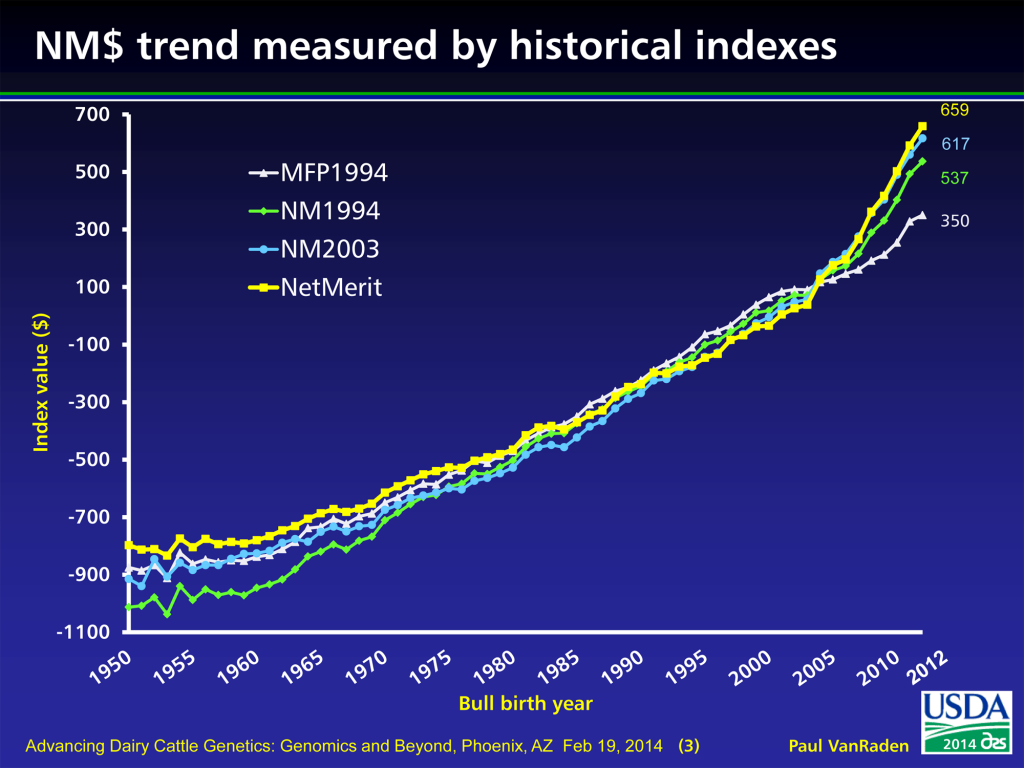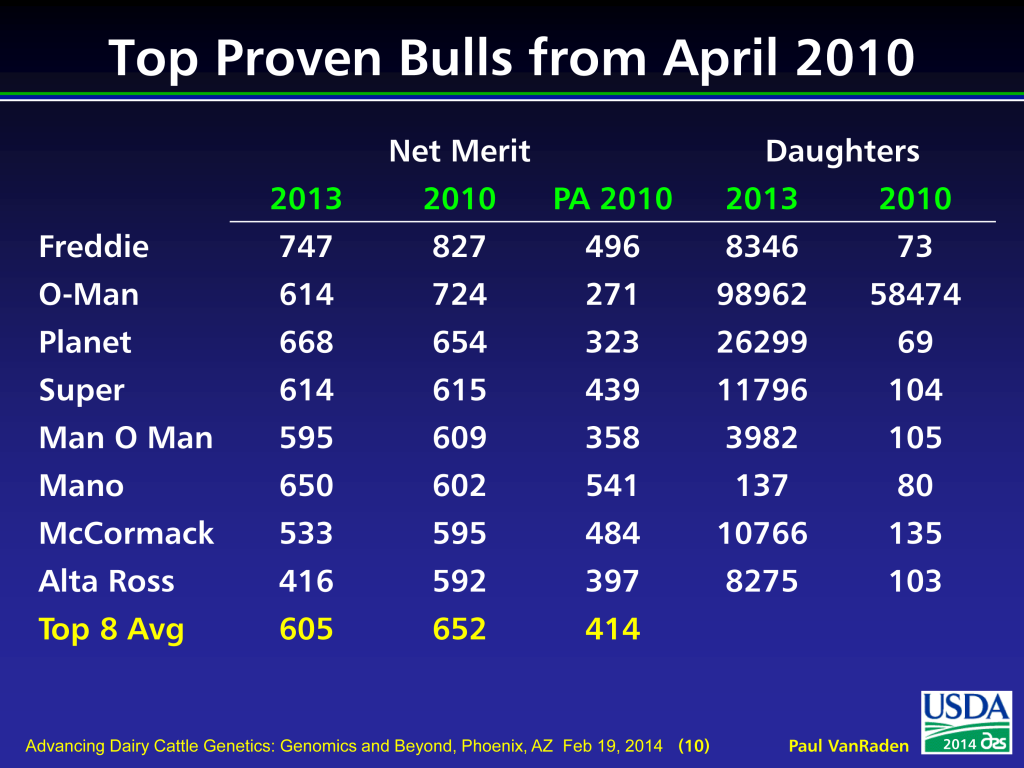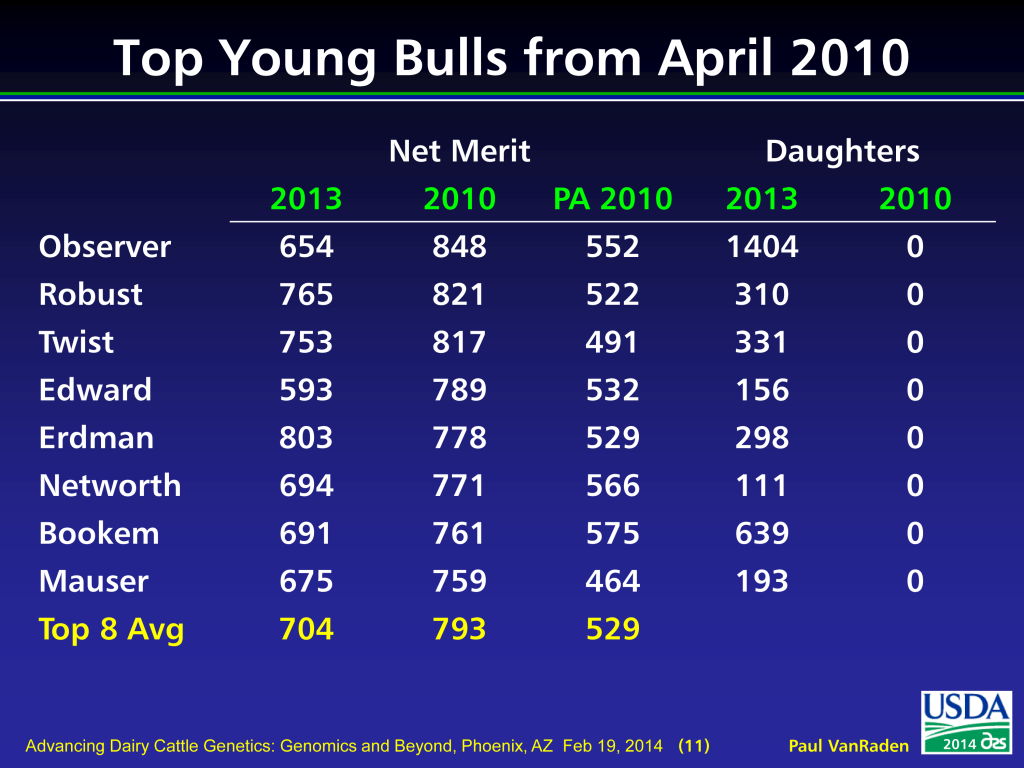Can genomics eliminate luck in dairy breeding? Discover how chance shaped Holstein’s history and why unpredictability still impacts your herd today.
I’ve always been fascinated by that eternal question in dairy breeding: can science and technology eliminate the role of luck? With April 2025’s genetic evaluation updates just around the corner, it feels like the perfect time to dig into whether our fancy genomic tools have truly kicked chance to the curb—or if they’ve just given us better ways to dance with it. After talking with industry experts and diving into the research, I’ve discovered something surprising: some of Holstein’s most influential bloodlines emerged from happy accidents that no amount of genomic testing could have predicted.
The Genomics Revolution vs. Lady Luck
Let’s be honest—whenever we talk about breeding success these days, we can’t help but focus on genomic selection, advanced mating programs, and all those impressive reproductive technologies. I mean, how couldn’t we? These tools have transformed our industry.
The April 2025 genetic evaluation updates are coming fast, with revised lifetime merit indices that shift to the 2020 genetic base. Have you been keeping up with the Council on Dairy Cattle Breeding announcements? They’re projecting some major PTA decreases: -750 pounds of milk, -45 pounds of fat, and -30 pounds of protein for Holsteins.
Don’t panic! As Chuck Sattler from Select Sires explained recently, “The 2025 base change is bigger than previous adjustments, but this is good news! It means that our cows are improving faster than ever.”
But here’s what keeps me up at night: Have we eliminated Lady Luck from the breeding equation? Or have we just given her a shiny new genomic lab coat?
The 75% Solution: What Genomics Can (and Can’t) Tell Us

I was digging through some research recently and found something fascinating from the National Center for Biotechnology Information. Our most advanced genomic prediction tools show only about 75% reliability for production traits. That means a quarter of what makes a cow productive remains outside our ability to predict!
This 75% reliability has been consistent for years. A 2011 Journal of Dairy Science study noted that this level is “adequate for marketing semen of 2-yr-old bulls,” but it’s far from perfect. The primary benefit? A shortened generation interval that increases the rate of genetic improvement.
Think about that 25% gap next time you’re making breeding decisions. It’s not just a tiny margin of error—it’s a significant space where luck, chance, and unexplained genetic interactions still reign supreme.
Lucky Breaks That Shaped Holstein History
You know what’s crazy? Looking back through Holstein’s history, some of the breed’s most influential genetic lines happened because of tiny accidents, missed connections, or just plain dumb luck. I’ve collected four of my favorite examples in this table:
| Lucky Break Event | What Actually Happened | What Could Have Happened | Resulting Influential Sire/Dam | Long-term Impact |
| Missing Telephone | Spring Brook Bess Burke sold to George Miller | Would have been purchased by Lashbrook | Led to Osborndale Ivanhoe, Elevation, Starbuck, Aerostar | Shaped modern Holstein genetics |
| Injured Leg | Montvic Chieftain injured, Pathfinder offered instead | Whitney would have taken Chieftain | Round Oak Rag Apple Elevation | Foundation of influential bloodlines |
| Change of Clothes | Visitors saw Temple Farm May while Dunton changed | Might never have noticed the cow | A.B.C. Reflection Sovereign | One of the breed’s most respected sires |
| Wrong Semen | Inseminator arrived without Pabst Walker semen | Tiny Supreme DeKol would have been bred differently | Almerson Sovereign Supreme | Highly respected Canadian bull line |
No Phone, No Starbuck? The Wild Story of the Missing Call

I can’t get over this first story—it blows my mind whenever I think about it. In the early 1900s, A.J. Lashbrook and his brother sold some inherited shares for $250 (not exactly chump change) to invest in Holstein cattle.
Their father spotted three gorgeous heifer calves at Spring Brook Farm, priced at $75 each. I mean, imagine that kind of deal today!
But get this—they didn’t have a telephone to confirm the purchase! So Dad had to return the next day, only to find that the calves had already been sold to George Miller. It turns out that Schilling, the Spring Brook Farm manager, had mentioned the calves to a local feed mill owner, who told Miller. Talk about bad timing!
One of those calves? Spring Brook Bess Burke. Miller raised them, bred them to Sir Johanna Canary DeKol, and sold them to F.C. Schroeder of Moorhead, Minnesota.
“Years later, Mr. Schroeder visited our herd and, when I took him back to the depot, remarked that Spring Brook Bess Burke 2nd was born in a box car just as the train passed the depot after leaving the stockyards,” said Lashbrook.
She eventually found her way to E.C. Schroeder in Minnesota, where she and her daughter made incredible production records when bred to Sir Pietertje Ormsby Mercedes.
Lashbrook later reflected (and I love this quote): “As I look back now, it was indeed fortunate that we did not have a telephone and that those calves never came to our farm. We were only small breeders and… probably never would have developed those cows.”
Here’s the kicker—without that missing telephone, there would have been no Osborndale Ivanhoe, no Elevation, no Starbuck, and no Aerostar. Can you imagine modern Holstein genetics without those bulls? I sure can’t!
The Data Behind Modern Breeding: What Science Tells Us
While historical anecdotes are fascinating, let’s look at what the research says about genomic selection today. A 2020 study published by the National Center for Biotechnology Information found something that really caught my attention: inbreeding can significantly impact how well genomics works as a prediction tool.
The study examined high-producing primiparous dairy cows and found that individuals with an Inbreeding Index between ≥2.5 and ≤5.0 showed a two-fold increase in negative correlations between genomic predictions and actual performance. This affected critical traits, including Milk Production at 305 days, Protein Production, Fertility Index, and Daughter Pregnancy Rate.
What does this mean for your breeding program? Even with perfect genomic tools, factors like inbreeding can throw a massive wrench into the works. Your carefully selected mating might produce unexpected positive or negative results based on genetic interactions our current models can’t predict.
The Luckiest Injured Leg in Holstein History
I love this next story. F.C. Whitney had purchased Montvic Chieftain from T.B. Macaulay. But Chieftain slipped and injured his leg while loading the bull onto the truck. Bummer, right?
Macaulay called Whitney and told him they could have Montvic Pathfinder for the same price!
Now, Pathfinder wasn’t winning any beauty contests. Whitney’s description of him as “as homely a brute as a man ever saw” makes me laugh every time. But his pedigree? Absolutely stellar, with multiple All-American winners. As the text says, “Montvic Pathfinder, some claimed, possessed the best pedigree ever written,” including “four All-American wins to his credit, including aged cow in 1935 and 1936.”
Whitney decided to take a chance on the ugly duckling. At his farm in New York, Pathfinder sired Montvic Pathfinder Prizetaker, proven in the herd of Eugene and Clarence Harvey, Cincinnatus, N.Y. In making his switch from Jerseys to Holsteins, Charles Hope, Round Oak Farm, Purcellville, Va., over four years, purchased 17 Prizetaker daughters from the Harveys, as well as several Montvic Chieftain 6th calves and bought Montvic Pathfinder Prizetaker, himself. He used a son of his, Round Oak Montvic PF General, who sired Round Oak Millie Elizabeth, Elevation’s third dam.
So, luck again. Had Chieftain not banged up his leg, Pathfinder wouldn’t have gone to the United States, and there would have been no Round Oak Rag Apple Elevation.
The Preferential Treatment Problem
The latest research has revealed something that fascinates me: genomic predictions can be significantly biased by the preferential treatment of elite cows. A 2018 study published in the Journal of Dairy Science simulated what happens when elite bull dams receive special treatment.
The researchers found that it could significantly skew genomic predictions when just 5-20% of elite bull dams received preferential treatment (introducing an upward bias in their performance data). This is especially true for traits with low heritability, where the accuracy of genomic predictions is already challenging.
This research explains why sometimes the offspring of “sure thing” matings don’t perform as expected. The genomic values looked great on paper but may have been inflated by the special treatment of the cow families in the reference population. It’s another way chance enters our breeding programs—through human bias and the limitations of our measurement systems.
When Your AI Guy Says “Sorry, I’m Out”
How many times has this happened to you? You call your AI technician with the perfect mating all planned out, and they hit you with: “Sorry, I’m out of that bull’s semen today.”
One of those cows was Tiny Supreme DeKol! Aylmer Petherick had chosen Pabst Walker for Tiny’s next mating, but the inseminator, on the day he came to breed her, wasn’t carrying his semen. “What else have you got?” Aylmer asked. He settled on Hainescrest Sovereign Tycoon.
Almerson Sovereign Supreme, the result of the mating, was eventually classified as Excellent and received a Class Extra rating en route to becoming one of the most respected bulls in Canadian history. It was highly regarded by leading cattlemen of the day, including Pete Heffering and Dave Houck. What a great example of turning what is available into something great!
Who knows? Your backup choice today might create tomorrow’s game-changing bloodline. All those genomic tools might guide your primary selections, but chance still decides whether those straws are in your AI tank when needed.
The 25-35% Gap That Keeps Me Up at Night
Here’s what fascinates me about genomic selection: for all its revolutionary power, it still can’t predict everything. Not even close.
According to research published in the Journal of Dairy Science, current reliability percentages for genomically tested young animals typically hover between 65% and 75% for production traits and even lower for health and fertility traits.
That means that 25-35% of a cow’s genetic potential remains unpredictable through our current genomic models. That’s a huge gap!
Four main factors create this uncertainty:
- Gene interactions: Genomic models struggle to capture how genes influence each other. The same marker might perform differently depending on the overall genetic background.
- Environmental influences: How genes express themselves varies wildly in different environments. I’ve seen genetically identical cows perform completely differently on neighboring farms.
- Genetic recombination: Even with identical parents, each calf gets a unique genetic package. It’s like shuffling a deck of cards—you never deal the same hand twice.
- New mutations: Sometimes genetic changes appear absent in either parent, creating traits nobody predicted.
ROI on Genomic Testing: The Numbers Don’t Lie
Let’s talk dollars and cents for a minute. Despite the limitations, genomic testing has demonstrated impressive financial returns. Recent industry analyses suggest that genomic testing of heifers delivers approximately $75-$200 in additional lifetime profit per animal tested, primarily through improved selection decisions and optimized heifer inventory management.
The financial return varies based on several factors:
- Current replacement costs in your area
- Your herd’s genetic level relative to the breed
- How aggressively do you cull based on genomic results
- Whether you use sexed or beef semen strategically
Even with these impressive returns, the unpredictable 25-30% of genetic potential means some animals will significantly underperform or overperform their genomic predictions. This variability creates risk and opportunity—sometimes, your lowest-ranked genomic heifer produces your best cow. Ask any experienced breeder, and they’ll have at least one story like this!
The Change of Clothes That Changed Everything
This next story makes me smile every time. “Luck played a part, too, in the A.B.C. Reflection Sovereign story.” History might have taken a different course if he had waited for them on his front porch. Doug Dunton walked up from the stable in his barn clothes when they arrived. That September 1942, Jack Fraser, Elgin Armstrong, and Cliff Chant, his herdsman, had stopped at Dunton’s to scout up some cows for Armstrong’s A.B.C. Farm.”
“Wait a minute while I change my clothes,” said Dunton as he approached the house. His visitors sauntered down to the barn. As they walked, they passed a big, white Lonelm Texal Alcartra daughter named Temple Farm May, getting ready to calve. Before the day was out, Armstrong bought the cow for $400.00. Dunton agreed to keep her until she freshened. She was bred to Inka Supreme Reflection, and the calf was A.B.C. Inka May.
What a find! A.B.C. Inka May did everything right. She was a ferocious producer with an Honour List record of 24,141 lbs. milk, 4.67%, and 1,128 lbs. fat in 1947, the same year she was an All-Canadian four-year-old. But her supreme achievement was as dam of A.B.C. Reflection Sovereign (EX-Extra), who many claim was the best bull the breed has produced.
So yeah! Luck also influenced this bull’s genetics. Who knows what would have happened if Dunton had not changed then?
Hidden Gems Hiding in Plain Sight?
This makes me wonder—what excellent cows are we walking past daily, fixated on our genomic printouts?
With the April 2025 evaluation changes, we’re facing a significant recalibration of genetic values. According to the latest announcements I’ve seen, the Net Merit $ (NM$) index is getting a serious makeover: increased emphasis on butterfat (+13% weighting), greater focus on feed efficiency (41% higher combined impact), and doubled weighting for cow livability.
This reranking creates an opportunity to spot “hidden gems” that our current systems might be undervaluing. Are you only chasing the highest numbers, or are you developing that breeder’s eye to recognize special animals others might miss—just like Armstrong spotted value in Temple Farm May?
The best breeders I know combine data with that indefinable “cow sense” that no genomic test can replace.
Navigating the Balance: Genomics vs. Serendipity
Here’s how I think about the interplay between precision and chance in different aspects of breeding:
| Aspect of Breeding | How Genomics Influences It | Role of Chance Still Present |
| Selection Decisions | Identifies animals with superior genetic potential earlier and more accurately | Which animals you choose to test and develop still involves human judgment |
| Mating Choices | Predicts outcomes of specific matings with greater precision | Availability of preferred sires, conception success, and embryo viability remain variable |
| Trait Predictions | Provides reliable estimates for well-studied traits with high heritability | Novel traits, gene interactions, and environmental influences remain less predictable |
| Health Outcomes | Identifies genetic predispositions to certain diseases | Many health events remain unpredictable despite genomic information |
| Fertility | Helps select for improved reproductive traits | Individual conception events remain highly variable |
| Longevity | Predicts genetic components of productive life | Many factors affecting actual lifespan remain outside genomic prediction |
| Elite Animal Identification | Accelerates discovery of superior genetics | The specific combinations that create truly exceptional animals still involve elements of chance |
Gearing Up for April 2025: What You Need to Know
The latest genomic technology has improved prediction accuracy. I’ve been reading about these new machine-learning algorithms that better account for gene interactions and environmental factors. According to recent research in the Journal of Dairy Science, these models have boosted reliability percentages by about 5-7% for most traits.
That’s progress! But even with these improvements, we’re still looking at about 20-30% of genetic potential remaining unpredictable. And that unpredictable zone? That’s where luck—both good and bad—continues to play its role.
The April 2025 genetic evaluation updates will incorporate these improved models but won’t eliminate chance. According to The Bullvine’s recent report (which I highly recommend reading), we’ll need to recalibrate our sire selection thresholds—what used to be a +2000 NM$ will become approximately +1300 NM$. It’s going to take some mental adjustment for all of us.
4 Ways to Balance Science with Serendipity
As we get closer to the April 2025 genetic evaluations update, here are four strategies I’m recommending to my friends in the industry:
- Get familiar with the changes: Take time to understand the revised lifetime merit indices and that base change shift to cows born in 2020. Chuck Sattler from Select Sires advises: “The adjustments coming in April will mean you will likely need to recalibrate the selection levels used for A.I. sires and which cows are bred to beef or sexed semen.”
- Don’t put all your eggs in one genomic basket. The industry focuses on an increasingly narrow range of elite genetics. Consider incorporating some differently-bred Holstein cattle that offer unique genetic contributions. Genetic diversity provides more opportunities for unexpected combinations that sometimes create magic.
- Build in flexibility: What’s your Plan B when your first-choice matings aren’t possible? Those backup plans sometimes produce better results than the original! Avoid getting trapped in the mindset that there’s only one “right” mating for each animal.
- Trust your eyes, not just the numbers. While genomic testing provides incredibly valuable data, don’t lose that breeder’s instinct. The best operations I visited combined quantitative assessment with qualitative judgment—they used printouts and indefinable “cow sense.”

The Bottom Line
As we approach these April 2025 genetic evaluation updates, I keep returning to this fundamental truth: breeding success has always emerged from a blend of scientific precision and happy accidents.
Genomic selection gives us unprecedented insight into genetic potential. Still, the stories of Holstein’s most influential animals remind us that some of our greatest breeding successes came from unexpected turns of fate.
So, does genomic selection take the luck out of dairy breeding? Not a chance. Genomics has given us better tools to capitalize on luck when it strikes. The technology helps us identify promising animals earlier and more accurately. Still, it doesn’t eliminate the fundamental randomness involved in genetic recombination, gene expression, and the countless small decisions that shape breeding outcomes.
The lesson? Use every scientific tool, but keep your eyes open for those unexpected opportunities that genomics can’t predict. Use genomic testing to identify high-potential animals, study the upcoming changes to evaluation indices, and align your breeding program with your farm’s economic goals.
But never forget that sometimes, the most valuable genetic combination might emerge when your inseminator runs out of your first-choice semen, when visitors happen to notice a special cow while you’re changing clothes, or when a replacement bull offered due to an injury turns out to be a breed-defining sire.
Holstein history shows us that luck creates opportunities—but only those with the knowledge and vision to recognize potential can transform those opportunities into lasting genetic contributions. As you prepare for the changes in April 2025, keep one eye on the data and the other open to the possibilities that might lead to your herd’s next great success story.
Key Takeaways
- Luck shapes breeding success: Historical examples like Spring Brook Bess Burke and Montvic Pathfinder show how chance created legendary Holstein sires.
- Genomics isn’t perfect: Current tools offer up to 75% reliability for production traits, leaving room for unpredictability in genetic outcomes.
- Prepare for April 2025 updates: Recalibrate sire selection thresholds as Net Merit $ indices shift focus toward butterfat, feed efficiency, and cow livability.
- Flexibility matters: Backup mating plans and a keen breeder’s eye can uncover hidden gems that genomic data might overlook.
- Balance science with serendipity: Use genomic tools strategically while staying open to unexpected opportunities that could transform your herd.
Executive Summary
Dairy breeding has come a long way with genomic selection, but luck remains an undeniable factor in shaping success. This article explores pivotal moments in Holstein history, like Spring Brook Bess Burke’s missed purchase, Montvic Pathfinder’s unexpected rise, and Temple Farm May’s discovery, to show how chance created breed-defining sires. Even today, genomic tools offer impressive reliability (up to 75%), yet factors like genetic recombination and environmental influences leave a 25-35% prediction gap. As the April 2025 genetic evaluation updates approach, breeders must balance precision with flexibility to capitalize on unexpected opportunities. From backup mating plans to spotting hidden gems, this article offers actionable strategies to navigate the intersection of science and serendipity in dairy breeding.
Learn more
- Genomics Meets Artificial Intelligence: Transforming Dairy Cattle Breeding Strategies
Discover how genomics and AI revolutionize dairy cattle breeding, enabling precise trait selection and accelerating genetic progress. - Rethinking Balanced Breeding for 2028 and Beyond
Explore how strategic mating decisions and precision genetic advancements shape the future of dairy cattle breeding. - How Genomics and Sexed Semen Are Remaking the Dairy Cow
Learn how cutting-edge technologies like genomics and sexed semen are helping farmers breed cows optimized for butterfat, protein, and profitability.
 Join the Revolution!
Join the Revolution!
Join over 30,000 successful dairy professionals who rely on Bullvine Daily for their competitive edge. Delivered directly to your inbox each week, our exclusive industry insights help you make smarter decisions while saving precious hours every week. Never miss critical updates on milk production trends, breakthrough technologies, and profit-boosting strategies that top producers are already implementing. Subscribe now to transform your dairy operation’s efficiency and profitability—your future success is just one click away.







 Join the Revolution!
Join the Revolution!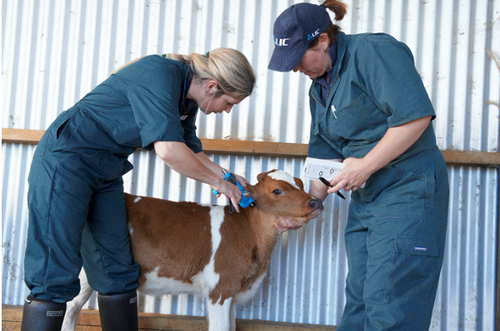

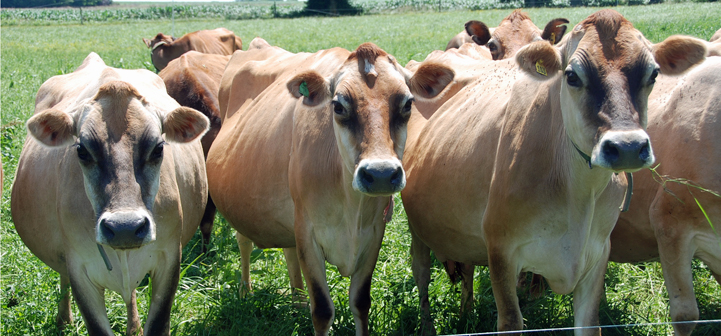 For decades dairy production systems have faced the challenge of attaining adequate fertility levels. Insufficient reproductive performance will result on reductions on the proportion of cows at their peak production period, increments in insemination costs, and delayed genetic progress. Moreover, impaired fertility is one of the most frequent reasons for culling and increased days open are associated with a greater risk of death or culling in the subsequent lactation.
For decades dairy production systems have faced the challenge of attaining adequate fertility levels. Insufficient reproductive performance will result on reductions on the proportion of cows at their peak production period, increments in insemination costs, and delayed genetic progress. Moreover, impaired fertility is one of the most frequent reasons for culling and increased days open are associated with a greater risk of death or culling in the subsequent lactation.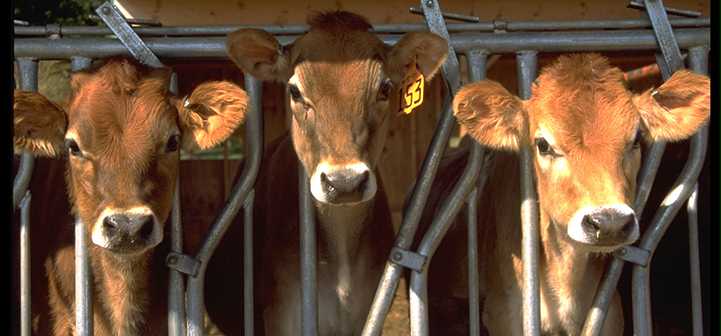 Dramatic changes have occurred in dairy sire selection practices in recent years. These changes have been facilitated by the sequencing of the bovine genome, which led to the discovery of thousands of DNA markers, known as single nucleotide polymorphisms or SNPs. The development of predicted breeding values based on marker data alone (Meuwissen et al., 2001), coupled with a reduction in the cost of genotyping, has allowed for accurate genomic selection of dairy sires by AI centers. As described by Hayes et al. (2009) genomic selection refers to selection decisions based on genomic breeding values (GEBV). Before continuing the discussion on genomic selection, however, it is important to understand traditional progeny testing. Historically, progeny testing was key to genetic improvement of dairy cattle (Sattler, 2013), via identification of the best bulls for widespread use and as sires of bulls for the next generation.
Dramatic changes have occurred in dairy sire selection practices in recent years. These changes have been facilitated by the sequencing of the bovine genome, which led to the discovery of thousands of DNA markers, known as single nucleotide polymorphisms or SNPs. The development of predicted breeding values based on marker data alone (Meuwissen et al., 2001), coupled with a reduction in the cost of genotyping, has allowed for accurate genomic selection of dairy sires by AI centers. As described by Hayes et al. (2009) genomic selection refers to selection decisions based on genomic breeding values (GEBV). Before continuing the discussion on genomic selection, however, it is important to understand traditional progeny testing. Historically, progeny testing was key to genetic improvement of dairy cattle (Sattler, 2013), via identification of the best bulls for widespread use and as sires of bulls for the next generation.



 In the coming weeks, Irish dairy farmers will be sitting down to select sires to breed the next generation of cows on their farms.
In the coming weeks, Irish dairy farmers will be sitting down to select sires to breed the next generation of cows on their farms.

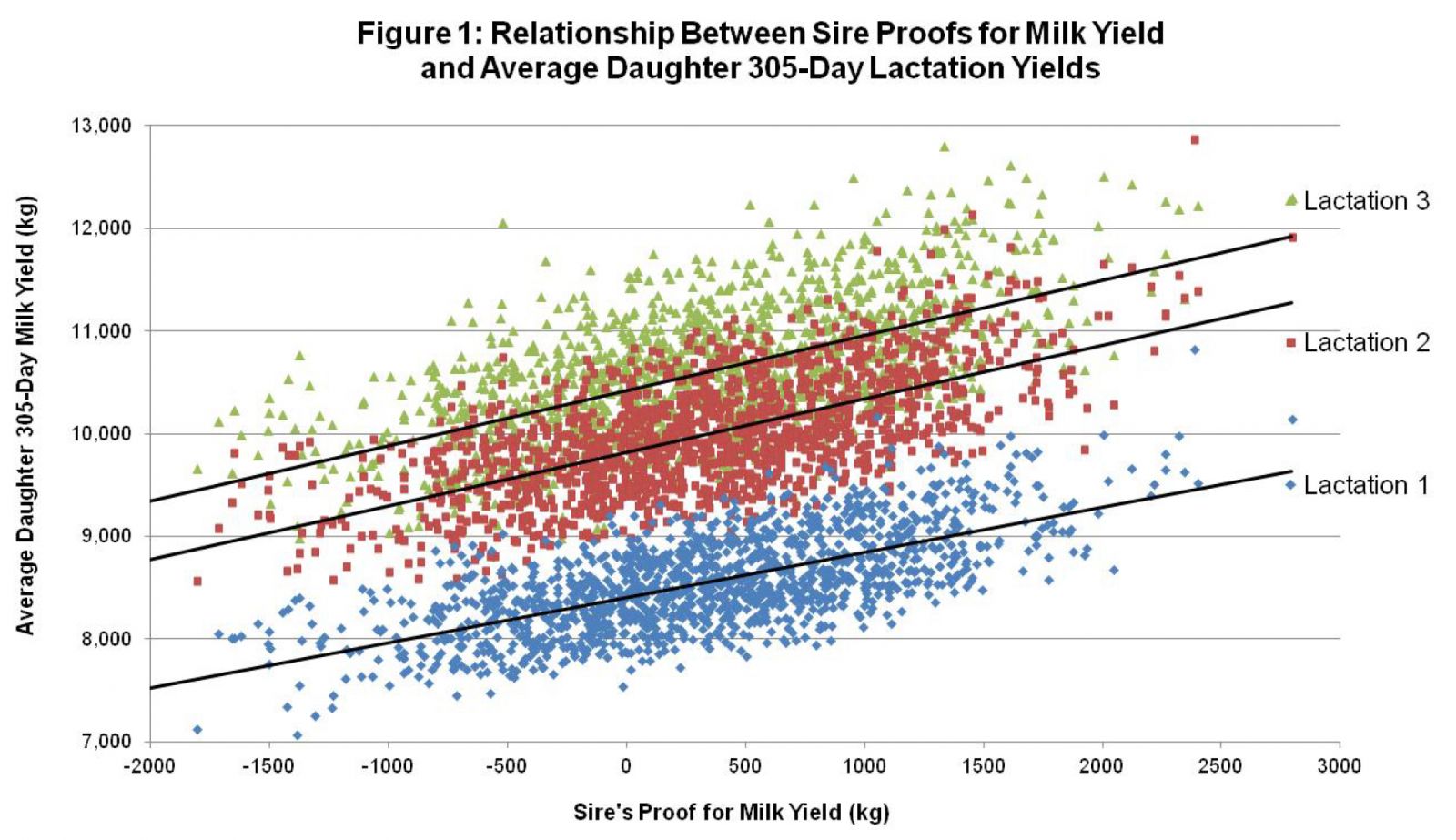
.jpg)
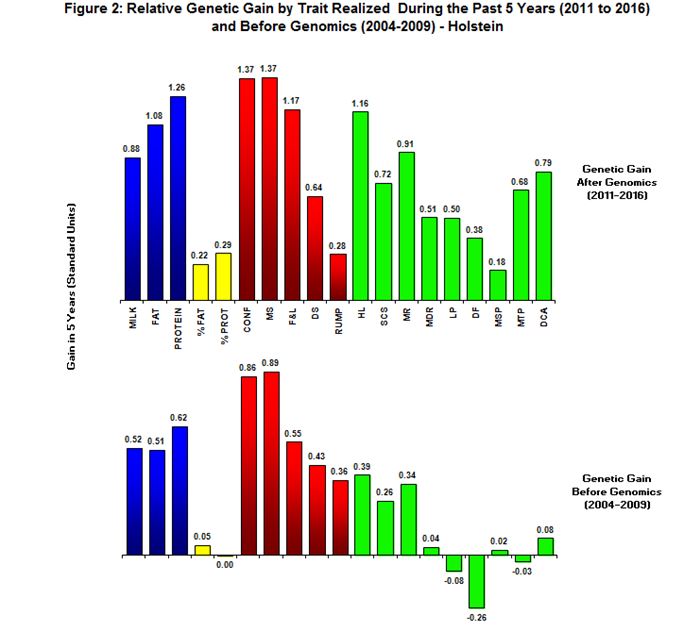

 We’re well into the genomic era. If you’re like most producers, you’re now comfortable incorporating genomic-proven bulls as part of your balanced breeding program.
We’re well into the genomic era. If you’re like most producers, you’re now comfortable incorporating genomic-proven bulls as part of your balanced breeding program.

 Graph 3. Histogram of difference in TPI from genomic release in 2013 to April 2017 daughter proof
Graph 3. Histogram of difference in TPI from genomic release in 2013 to April 2017 daughter proof Graph 4. Histogram of difference in NM$ from genomic release in 2013 to April 2017 daughter proof
Graph 4. Histogram of difference in NM$ from genomic release in 2013 to April 2017 daughter proof.JPG)
 A University of Wisconsin research professor is nearly finished with a study on genomic selection for feed efficiency in dairy cows.
A University of Wisconsin research professor is nearly finished with a study on genomic selection for feed efficiency in dairy cows. Scotland may be best known for bagpipes, but it’s the data derived from Scottish dairy cows that is music to the ears of genomic researchers.
Scotland may be best known for bagpipes, but it’s the data derived from Scottish dairy cows that is music to the ears of genomic researchers. In light of some recent election results, “giving the people what they want” isn’t always the way to go. When those people are the beneficiaries of research efforts, however, it’s not a bad idea.
In light of some recent election results, “giving the people what they want” isn’t always the way to go. When those people are the beneficiaries of research efforts, however, it’s not a bad idea..jpg)
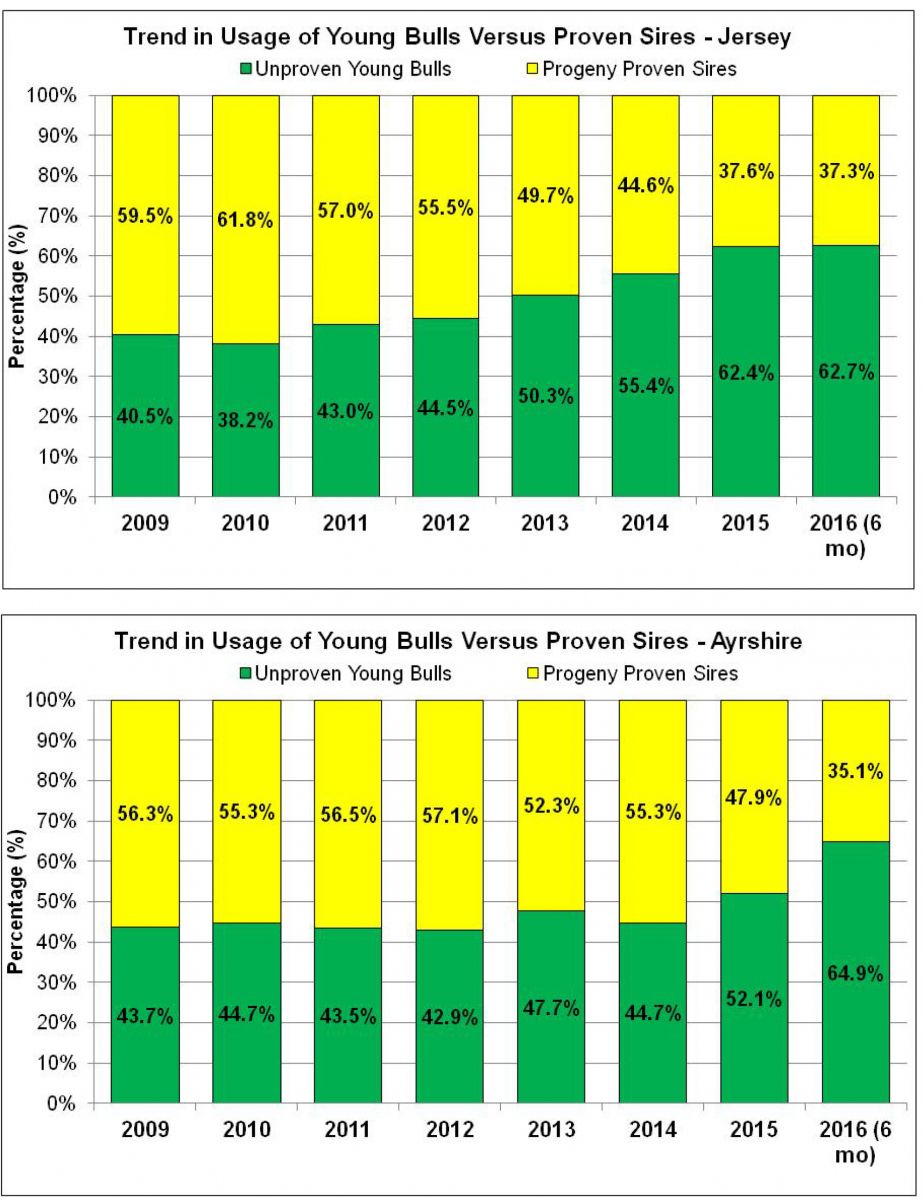
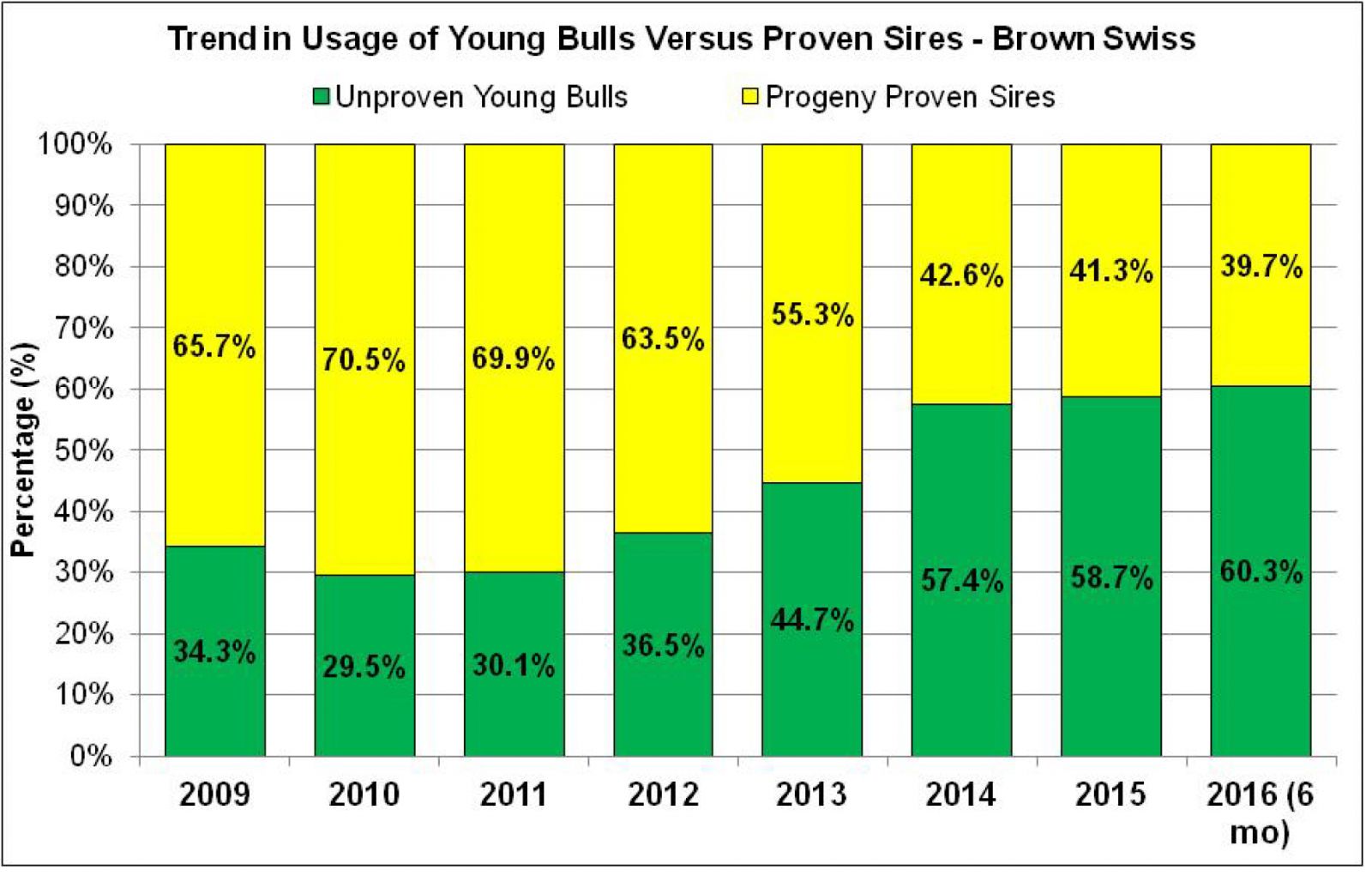

 Advances in genomic testing create new opportunities for commercial dairy producers to have more control over their herds’ profit potential. With an abundance of available replacement heifers, producers have the ability to replace less profitable cows with genetically superior heifers, shortening the generation interval and accelerating the genetic progress.
Advances in genomic testing create new opportunities for commercial dairy producers to have more control over their herds’ profit potential. With an abundance of available replacement heifers, producers have the ability to replace less profitable cows with genetically superior heifers, shortening the generation interval and accelerating the genetic progress.![Neogen-logo[1]](https://www.thebullvine.com/wp-content/uploads/2016/03/Neogen-logo1.gif) For genomic selection, researchers look for markers or single nucleotide polymorphisms (SNPs). A SNP is a place in a chromosome where the DNA sequence can differ among individuals. SNPs are most useful when they occur close to a gene that contributes to an important trait. Most traits are controlled by many genes, making this a very complex process. Significant progress was made when a genotyping computer chip was developed that could identify more than 50,000 SNPs (50K test) on the genome.
For genomic selection, researchers look for markers or single nucleotide polymorphisms (SNPs). A SNP is a place in a chromosome where the DNA sequence can differ among individuals. SNPs are most useful when they occur close to a gene that contributes to an important trait. Most traits are controlled by many genes, making this a very complex process. Significant progress was made when a genotyping computer chip was developed that could identify more than 50,000 SNPs (50K test) on the genome. Seven years into it, genomics has become nearly as common of a term as AI. We’re now used to the genetic technology and feel confident using genomic-proven bulls as part of a balanced breeding program.
Seven years into it, genomics has become nearly as common of a term as AI. We’re now used to the genetic technology and feel confident using genomic-proven bulls as part of a balanced breeding program.





 Dr. Weigel grew up in Iowa on the family farm (Weigeline Holsteins) and graduated from Iowa State University with a Degree in Dairy Science. He received both his M.S. and PhD from Virginia Tech, with his dissertation focusing on the prediction of genetic merit for lifetime profitability in Holsteins. Before joining the R&D group of Zoetis (formerly Pfizer Animal Health) in 1995, Dr. Weigel served as a post-doctoral fellow at the University of Guelph working on the implementation of Multiple Across Country Evaluations (MACE) for conformation traits of Holstein sires. Dr. Weigel’s current role with Zoetis is in Outcomes Research and he remains active as a breeder of Registered Holsteins.
Dr. Weigel grew up in Iowa on the family farm (Weigeline Holsteins) and graduated from Iowa State University with a Degree in Dairy Science. He received both his M.S. and PhD from Virginia Tech, with his dissertation focusing on the prediction of genetic merit for lifetime profitability in Holsteins. Before joining the R&D group of Zoetis (formerly Pfizer Animal Health) in 1995, Dr. Weigel served as a post-doctoral fellow at the University of Guelph working on the implementation of Multiple Across Country Evaluations (MACE) for conformation traits of Holstein sires. Dr. Weigel’s current role with Zoetis is in Outcomes Research and he remains active as a breeder of Registered Holsteins.![zoetis[1]](https://www.thebullvine.com/wp-content/uploads/2015/06/zoetis1.jpg)
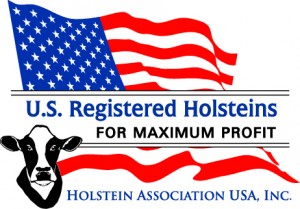
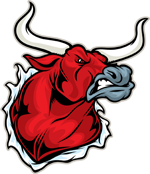
 Lindsey Worden has worked as Holstein Association USA’s Executive Director of Holstein Genetic Services since October 2013. In her role, she oversees staff responsible for maintaining the Association’s genomic and genetic testing programs and software programs such as Red Book Plus/MultiMate, as well as other performance programs such as classification and production records products, providing guidance and direction for various Association initiatives. Worden was HAUSA’s project manager for the development of the Enlight™ genetic management tool, which was developed in collaboration with Zoetis, and now oversees the team responsible for supporting the product. Prior to her current responsibilities, she served as Holstein Association USA’s communications manager for more than 6 years. Worden is a graduate of the University of Wisconsin-Madison where she studied dairy science and life science communications and was an active member of the Association of Women in Agriculture, Badger Dairy Club and the dairy judging team. She has had a lifetime of involvement in the dairy industry and Registered Holsteins growing up on her family’s dairy operations in New York and New Mexico, and in her free time still enjoys helping out on her family’s Central New York dairy and working with her cattle. Worden works out of the Holstein Association USA headquarters in scenic Brattleboro, Vermont.
Lindsey Worden has worked as Holstein Association USA’s Executive Director of Holstein Genetic Services since October 2013. In her role, she oversees staff responsible for maintaining the Association’s genomic and genetic testing programs and software programs such as Red Book Plus/MultiMate, as well as other performance programs such as classification and production records products, providing guidance and direction for various Association initiatives. Worden was HAUSA’s project manager for the development of the Enlight™ genetic management tool, which was developed in collaboration with Zoetis, and now oversees the team responsible for supporting the product. Prior to her current responsibilities, she served as Holstein Association USA’s communications manager for more than 6 years. Worden is a graduate of the University of Wisconsin-Madison where she studied dairy science and life science communications and was an active member of the Association of Women in Agriculture, Badger Dairy Club and the dairy judging team. She has had a lifetime of involvement in the dairy industry and Registered Holsteins growing up on her family’s dairy operations in New York and New Mexico, and in her free time still enjoys helping out on her family’s Central New York dairy and working with her cattle. Worden works out of the Holstein Association USA headquarters in scenic Brattleboro, Vermont. Cheryl Marti is the U.S. Marketing Manager for Dairy Genetics and Reproductive Products for Zoetis. She received her B.S. from the University of Minnesota in Animal Sciences, her M.S. in Dairy Science (Genetics emphasis) at the University of Wisconsin – Madison, and her MBA from UW-Whitewater. Cheryl worked in the AI industry at ABS Global for over 11 years in many different capacities, including management, marketing, training and technical support of the Genetic Management System (a genetic mate assignment program), and also worked in the Sire Acquisition and Research areas. She joined Pfizer Animal Health, now Zoetis, in 2005, first as a Fresh Cow Reproduction Manager in the Great Lakes states and later as a Dairy Production Specialist in WI where she often worked with large dairies on genomics, reproduction, records analysis, and transition cows until mid-2014 when she moved into her current role. Her experiences include working with herds of all sizes across the U.S. and over a dozen countries on 6 continents. Cheryl’s passion for the dairy industry and genetics began at her family’s Registered Holstein farm in Sleepy Eye, MN, where she owns some cattle, and her sister and brother-in-law own and operate their family farm of 700 acres and a 160-cow dairy called “Olmar Farms.
Cheryl Marti is the U.S. Marketing Manager for Dairy Genetics and Reproductive Products for Zoetis. She received her B.S. from the University of Minnesota in Animal Sciences, her M.S. in Dairy Science (Genetics emphasis) at the University of Wisconsin – Madison, and her MBA from UW-Whitewater. Cheryl worked in the AI industry at ABS Global for over 11 years in many different capacities, including management, marketing, training and technical support of the Genetic Management System (a genetic mate assignment program), and also worked in the Sire Acquisition and Research areas. She joined Pfizer Animal Health, now Zoetis, in 2005, first as a Fresh Cow Reproduction Manager in the Great Lakes states and later as a Dairy Production Specialist in WI where she often worked with large dairies on genomics, reproduction, records analysis, and transition cows until mid-2014 when she moved into her current role. Her experiences include working with herds of all sizes across the U.S. and over a dozen countries on 6 continents. Cheryl’s passion for the dairy industry and genetics began at her family’s Registered Holstein farm in Sleepy Eye, MN, where she owns some cattle, and her sister and brother-in-law own and operate their family farm of 700 acres and a 160-cow dairy called “Olmar Farms.
![lucky_20679[2]](https://www.thebullvine.com/wp-content/uploads/2015/06/lucky_206792-210x300.jpg) In the 1920’s and 30’s cigarette companies not only denied the health risks of smoking, they actually promoted them as a good thing, by putting up testimonials and stats about doctors who smoked. During the 1920s, Lucky Strike was the dominant cigarette brand. This brand, made by American Tobacco Company, was the first to use the image of a physician in its advertisements. “20,679 physicians say Luckies are less irritating,” its ads proclaimed. Of course many years later we are well aware of the health risks (480,000 people die prematurely each year in the US, due to smoking or being exposed to smoke). It’s flashbacks to this false advertising experience that dairy breeders are referencing when they distrust the use of genomics in dairy cattle breeding. They feel that it’s just the AI companies “forcing” genomics down their throats, in the same way that the tobacco companies “forced” smoking down the throats of millions, by using the weight of doctors’ credibility.
In the 1920’s and 30’s cigarette companies not only denied the health risks of smoking, they actually promoted them as a good thing, by putting up testimonials and stats about doctors who smoked. During the 1920s, Lucky Strike was the dominant cigarette brand. This brand, made by American Tobacco Company, was the first to use the image of a physician in its advertisements. “20,679 physicians say Luckies are less irritating,” its ads proclaimed. Of course many years later we are well aware of the health risks (480,000 people die prematurely each year in the US, due to smoking or being exposed to smoke). It’s flashbacks to this false advertising experience that dairy breeders are referencing when they distrust the use of genomics in dairy cattle breeding. They feel that it’s just the AI companies “forcing” genomics down their throats, in the same way that the tobacco companies “forced” smoking down the throats of millions, by using the weight of doctors’ credibility.![camels_doctors_whiteshirt[1]](https://www.thebullvine.com/wp-content/uploads/2015/06/camels_doctors_whiteshirt1-234x300.jpg) For a long time, physicians were the authority on health. Patients trusted their doctor’s education and expertise and, for the most part, followed their advice. When health concerns about cigarettes began to receive public attention in the 1930s, tobacco companies took preemptive action. They capitalised on people’s trust of physicians, to quell concerns about the dangers of smoking. Thus was born the use of doctors in cigarette advertisements. Executives at tobacco companies knew they had to take action to suppress the public’s fears about tobacco products.
For a long time, physicians were the authority on health. Patients trusted their doctor’s education and expertise and, for the most part, followed their advice. When health concerns about cigarettes began to receive public attention in the 1930s, tobacco companies took preemptive action. They capitalised on people’s trust of physicians, to quell concerns about the dangers of smoking. Thus was born the use of doctors in cigarette advertisements. Executives at tobacco companies knew they had to take action to suppress the public’s fears about tobacco products.![MW-AK965_cigare_20110621090115_MG[1]](https://www.thebullvine.com/wp-content/uploads/2015/06/MW-AK965_cigare_20110621090115_MG1.jpg)

 April Fools. There are just those breeders who will never accept Genomics as a tool in their breeding toolbox. For those of you who have or are still need convincing on why to use genomics in your breeding strategy we offer the following articles:
April Fools. There are just those breeders who will never accept Genomics as a tool in their breeding toolbox. For those of you who have or are still need convincing on why to use genomics in your breeding strategy we offer the following articles:



 The dairy industry needs to “wake up” to the dangers of using genomic bulls on maiden heifers, according to a breeding specialist.
The dairy industry needs to “wake up” to the dangers of using genomic bulls on maiden heifers, according to a breeding specialist.![330px-Diffusion_of_ideas.svg[1]](https://www.thebullvine.com/wp-content/uploads/2014/08/330px-Diffusion_of_ideas.svg1_.png) The reason for this has nothing to do with the merits of genomic sires versus proven sires. Rather it has to do with the historical patterns of adoption of new technologies. The theory behind this is called the Diffusion of Innovations. According to this theory, consumers differ in their readiness and willingness to adopt new technology. There are the innovators (2.5 percent of the population), the early adopters (13.5 percent), the early majority (34 percent), the late majority (34 percent), and the laggards (16 percent), who are also the people who still don’t have cell phones or who are not on Facebook.
The reason for this has nothing to do with the merits of genomic sires versus proven sires. Rather it has to do with the historical patterns of adoption of new technologies. The theory behind this is called the Diffusion of Innovations. According to this theory, consumers differ in their readiness and willingness to adopt new technology. There are the innovators (2.5 percent of the population), the early adopters (13.5 percent), the early majority (34 percent), the late majority (34 percent), and the laggards (16 percent), who are also the people who still don’t have cell phones or who are not on Facebook.
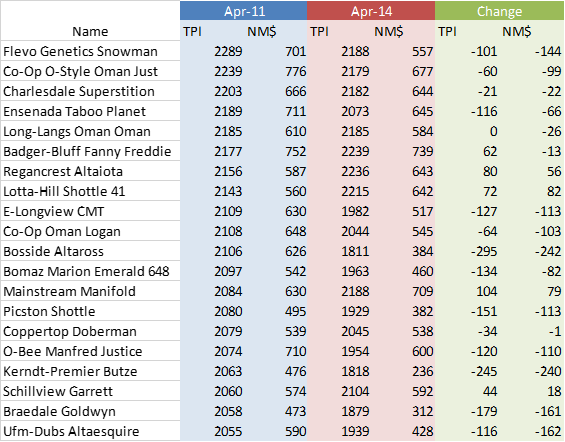
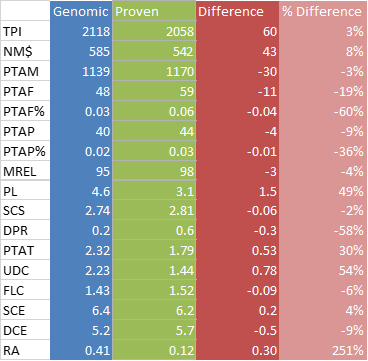
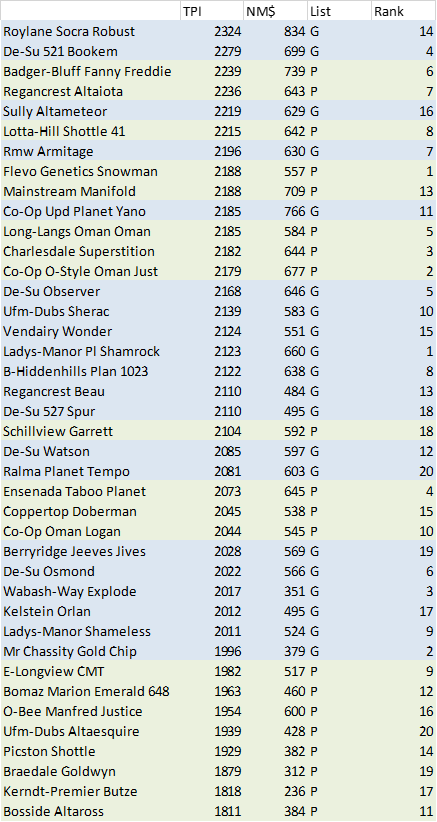
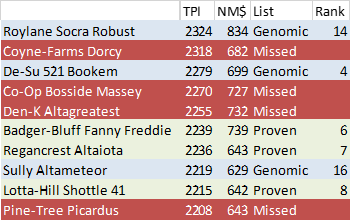
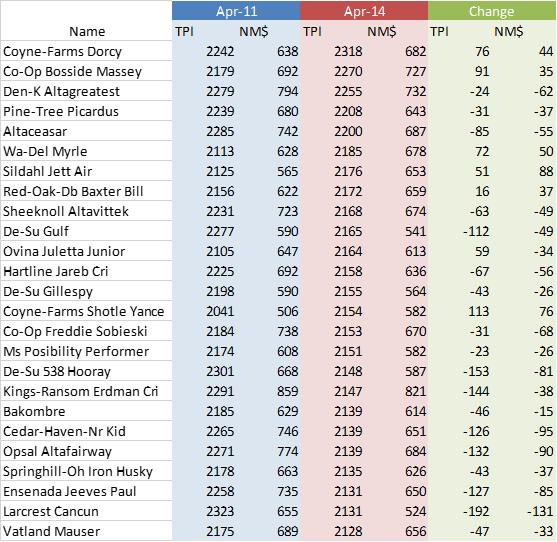
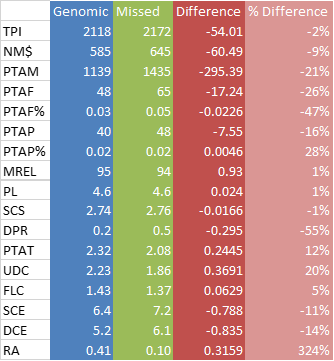
 Over the past few years, we’ve seen many examples of the benefits of genomics on the sire side. Quantifying the advantages of genomic selection on the female side has been slower, primarily due to the cautious adoption of the technology at the herd level. Of the registered Holstein heifers born in Canada in 2013, less than 5% were genotyped. On the other hand, CDN projections show that uptake could increase to surpass the 18% mark by year 2020.
Over the past few years, we’ve seen many examples of the benefits of genomics on the sire side. Quantifying the advantages of genomic selection on the female side has been slower, primarily due to the cautious adoption of the technology at the herd level. Of the registered Holstein heifers born in Canada in 2013, less than 5% were genotyped. On the other hand, CDN projections show that uptake could increase to surpass the 18% mark by year 2020.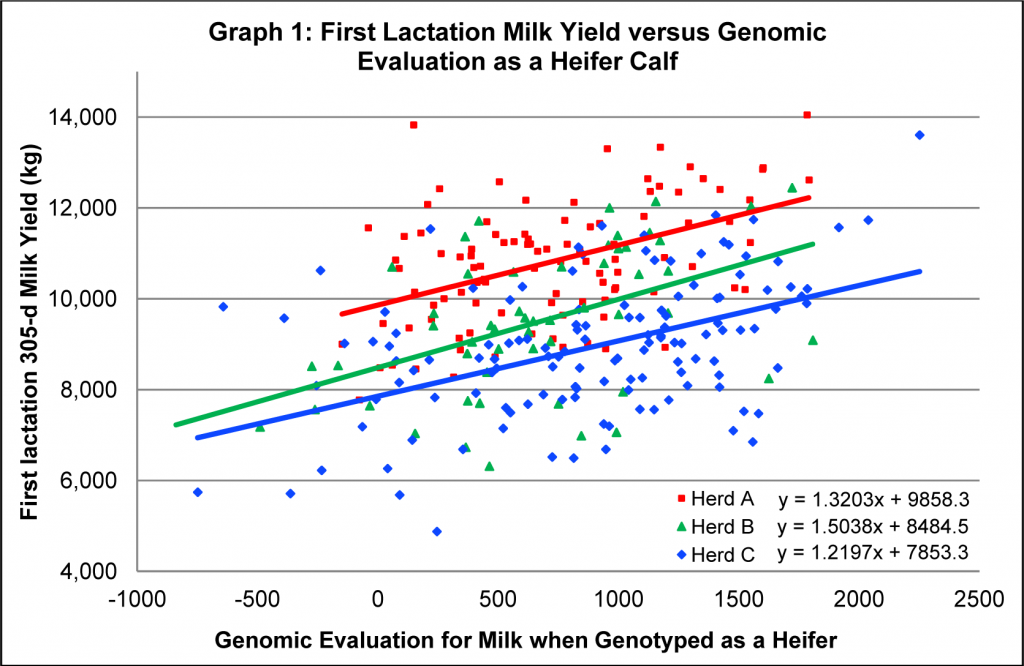

 The dairy industry has greatly evolved over the years with necessity-driven innovation. In order to be efficient in feeding a growing world, it has to.
The dairy industry has greatly evolved over the years with necessity-driven innovation. In order to be efficient in feeding a growing world, it has to.